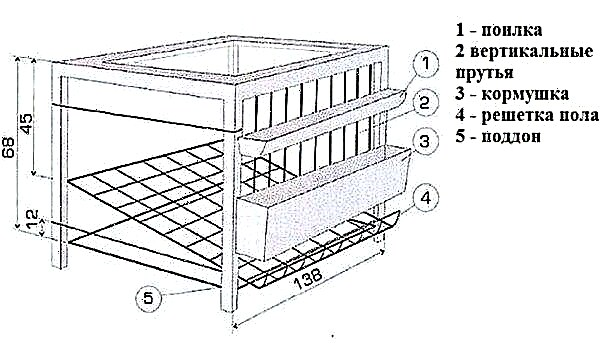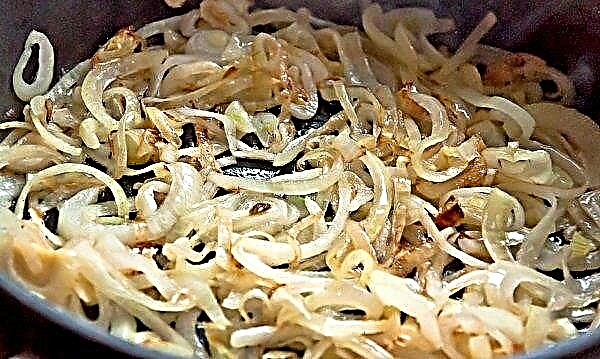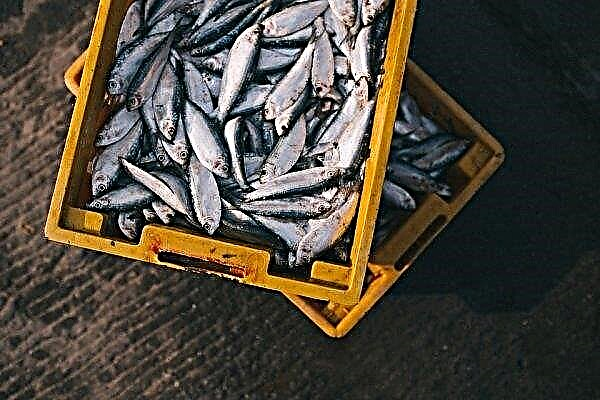Bees - a group of flying insects from the order Hymenoptera. These tiny representatives of the fauna, characterized by a short life, work all day long to feed their large family, thereby playing an important role in pollination of flowering plants, as they collect nectar and pollen. Let's take a closer look at the anatomy of these little toilers.
General characteristics of a bee
In total there are about 21 thousand species and 520 genera of bees. They are found on 6 continents. Nature created them so that they are able to feed on nectar and pollen, making them the main pollinators of flowering plants. Bees draw in nectar, which is a source of energy, with the help of a long proboscis, and they also find pollen thanks to their antennae. This is their main organ of smell. All individuals of the bee colony have one pair of antennae. They consist of segments, the number of which depends on the gender of the individual.
Bees necessarily have two pairs of wings, one pair of which (front) is larger than the second (back). Everyone knows what color the bee is: black with yellow transverse stripes, but the length of the body varies, depending on the species, within 2.1–39 mm. Dwarf bees have the smallest size, the largest are representatives of the species Megachile pluto, living in Indonesia. The following stages are distinguished in the bee cycle: egg, larva, pupa, adult. The egg is laid in a cell. The type of the newborn (uterus, drone, working) depends on what part of the queen cell the egg will be placed. An egg laid by the uterus is placed vertically in the cell. When fertilization occurs, the embryo begins to develop, the position of the egg in the cell will change (gradually tilting to the side). After 68–76 hours required for the development of all organs of the embryo, the egg will lie horizontally at the bottom of the cell.
The type of the newborn (uterus, drone, working) depends on what part of the queen cell the egg will be placed. An egg laid by the uterus is placed vertically in the cell. When fertilization occurs, the embryo begins to develop, the position of the egg in the cell will change (gradually tilting to the side). After 68–76 hours required for the development of all organs of the embryo, the egg will lie horizontally at the bottom of the cell.
At this point, the bees place food next to the egg, which contributes to the destruction of the egg shell and the emergence of a tiny worm-larva from it. Bees constantly add food, so the larva is surrounded by food, which is constantly mixed due to the movements of the worm. The larva which was born was only 1.6 mm long and transparent. By the end of the first day of her life, she already reaches 2.6 mm and her body becomes less transparent.
Important! After sealing, the larva of the future working bee loses weight, while the future uterus, on the contrary, is gaining. Because of this, the nurse bees gnaw the lid in advance and gnaw the uterine cocoon to make it easier to leave it.
On the third day of life, the larva will fill the entire bottom of the cell and have a matte color. From this moment, different larvae begin to be fed differently. So, the diet of working bees from the first day of life consists of milk, then it is replaced with honey and bee bread. Future queens are fed exclusively with one milk. The drones are also fed milk, but even more satisfying. During 5 (uterus), 6 (working individual) and 7 (drone) days, the larva molts 4 times. At the end of the last day, nurse bees seal cells with larvae.
The pupation process begins. How many days it takes will also depend on the type of larva. Until the pupa has turned into an adult insect, a molting process takes place a couple more times, and after the last drop of the old shell, a young insect gnaws at the lid and crawls out. In total, the development of a working bee requires 20 days, the uterus - 16, the drone - 24.
External structure
The body of the bee is segmented. He can distinguish such parts: head, chest, abdomen. The whole body is covered with hairs, which are the organ of touch. In addition, they protect the upper part of the body from contamination.
What the body consists of can be seen in the figure: 
Head
The head is protected by a thick layer of chitin, under which the brain is located. Its size depends on the type of bee. It has more drone than other individuals. The size and shape of the head also depends on the labor responsibilities of the insect. The uterus is rounded, the eyes are shifted to the frontal part. For workers, it is triangular, ordinary eyes are located on the crown of the head, drones are round, and facet eyes bend around the head and converge on the crown of the head. The simple ones are shifted towards the forehead.
Schematic illustration of the head of a bee (the head of the uterus (A), the working bee (B) and the drone (C): 1 - simple eyes, 2 - complex eyes, 3 - antennae, a - main segment, b - flagellum, 4 - upper lip, 5 - upper jaw, 6 - proboscis):
In the wide part of the head on the sides are 2 large fixed, facetted eyes. Between them, in the upper part, are 3 ordinary eyes. The space between them is dotted with long and dense hairs. In the rest of the head they are shorter. Anterior, located above the upper lip. In females they are divided into 11 segments, in males - by 12.
They are all connected by membranes, which makes the mustache very mobile. In the cavity of each antennae is a nerve that goes into the olfactory lobe of the brain. The outer shell of the antennae is the organ of touch and smell. At the bottom is a proboscis, consisting of two lower jaws and lower lip, capable of closing and dissecting.
Did you know? Bee Speed — about 65 km / h If it will fly loaded, then this value will decrease to 20–30 km / h
When they move, the trunk takes the form of a tube, with which the insect collects liquid food. The tongue licks solid food. Such a functional proboscis has only working bees. The rest of it is shorter, and the oral apparatus has lost its direct destiny. The upper jaw is well developed because it performs a gnawing function.
With their help, the insect kneads wax when it builds cells, and when it goes to get food, it removes pollen from stamens with them. The lower jaw and lip help lick and suck out nectar. Because of this, the bee’s oral apparatus is a gnawing-sucking type.
Chest
Inside the chest are the muscles responsible for all the movements of the insect. It consists of three rings and one segment from the abdomen. The smallest ring is connected to the head through a thin chitinous film, which allows the latter to make free movements. The middle ring acts as a frame. A front pair of wings is attached to it. The rear pair of wings is attached to the last ring. The total number of wings is 4. On each ring there is one pair of legs and spiracles through which air enters the body.
Wing structure
The wings are a thin elastic plate with veins (hardened hollow tubes). When the bee flies, both pairs of wings spread out, forming a single plane, and are fastened together by small hooks. When landing, the hooks are disconnected, and the wings are laid along the body, with the front larger wing covering the rear. They are driven by pectoral muscles. In flight, an insect carries out 200–250 wing flaps per second.
Important! In honeybees, the front pair of legs is shorter than the rest, but more mobile.
Abdomen
It has 6 rings. Each ring is divided into tergite (dorsal half rings) and sternite (abdominal half rings). They are interconnected by soft membranes, which allows each part to move freely. This allows the abdomen to grow in breadth and length, if necessary. The main internal organs of the insect are hidden behind the abdomen.
Legs
The legs of the bee are multifunctional. They support the body, with their help the bee moves, and also cleanses the body. In addition, the legs of working family members help to collect pollen and form balls of wax. Each bee has 3 pairs of legs, consisting of 5 segments connected movably. The front legs have brushes that allow the insect to clean its eyes, mouth and antennae, as well as helping to scrub pollen from the body. Middle legs also participate in pollen removal. They are covered with a large number of small hairs, which allows you to sweep pollen well. The hind limbs are as well mobile as the forelimbs. On them, from the outside of the lower leg, is a basket. In it, the insect forms a patch, which will be transferred to the hive. Such a complex structure of the limbs is only working individuals. The rest of the hive inhabitants are simpler.
They are covered with a large number of small hairs, which allows you to sweep pollen well. The hind limbs are as well mobile as the forelimbs. On them, from the outside of the lower leg, is a basket. In it, the insect forms a patch, which will be transferred to the hive. Such a complex structure of the limbs is only working individuals. The rest of the hive inhabitants are simpler.
Internal structure
The anatomy of the internal organs of the bee is adapted to their main task - the production of honey. The internal systems of the bee (side view in section) are presented in the figure below:
Circulatory system
The bee’s circulatory system is not open, but blood always circulates in a certain direction. This is achieved thanks to the coordinated work of the heart, aorta, abdominal and dorsal diaphragms. The heart is like a long tube and is located along the back. In the chest is the aorta, which delivers blood to the head. The entire tube is divided into 5 chambers connected through septum-valves that let blood pass in a certain direction (from the abdomen to the head).
For a minute at rest, the heart pulsates 60–70 times. Flying increases the frequency of pulsations to 150. The spinal and abdominal diaphragms are also part of the circulatory system. They control the flow of blood into the body. Blood moves to the limbs, antennae and wings due to the bubbles located at the base of these parts of the body.
Did you know? When a bee stings, it releases 0.3–0.8 mg of poison. Its amount will depend on the season and age of the insect. A dose of 0.2 g is fatal to humans. This amount of poison can be obtained from 500–1000 injections with a sting.
Nervous system
It is divided into three departments: central, peripheral and sympathetic. The central brain includes the brain and the abdominal chain of nerves, replacing the spinal cord. The frontal node is the beginning of the sympathetic department responsible for the functioning of the digestive, circulatory and respiratory systems. The brain, as the main node of the nervous system, contains the bulk of neurons.
Their greatest number is in the optic lobe and the mushroom body. As mentioned earlier, the size of the brain depends on the functions of the bee. In drones, it is the largest, but at the same time, the working individual has the most developed departments. A nerve cell (neuron) is the main structural unit of the nervous system. It has one long process (without branches) that transmits nerve impulses, and a branched process that can receive signals from the unbranched process and other neurons and transmit it by electrical signal to its neuron. It turns out that the first process acts as an output channel for transmitting information, and the second as an input.
A nerve cell (neuron) is the main structural unit of the nervous system. It has one long process (without branches) that transmits nerve impulses, and a branched process that can receive signals from the unbranched process and other neurons and transmit it by electrical signal to its neuron. It turns out that the first process acts as an output channel for transmitting information, and the second as an input.
Respiratory system
The structural features of the respiratory system of the insect are such that air enters the body through the spiracles, which are holes in the cuticle. Three pairs of spiracles are located on the thoracic region, 6 pairs - on the abdomen. Passing through the spiracles, the air is cleaned of dust and collected in bags. This air cannot return because the spiracles have valves.
From the bags, air travels through the trachea through tiny circular branches to all body systems. The body leaves the air only through the abdominal spiracles. The large first spiracles are reliably protected by a thick hair, but ticks can still get into them and cause the development of a disease called acarapidosis.
Important! Usually the old uterus leaves the family with a swarm, and the young remains in the hive.
Reproductive system
Bees have two types of females: the uterus and the working individual, but only the first species is capable of producing high-quality offspring. Usually there is only one uterus for the entire bee family. In working individuals, the genitals are very reproduced. The ovaries and oviducts do not have developed tubules. They begin to develop under certain conditions (the uterus died and the working bees changed their diet).
This will allow the females to produce eggs, but since they do not have a receptacle, the eggs will be unfertilized and only males can emerge from them. In the uterus, the ovary has approximately 150 tubes, in which one mature egg is located. The ovaries and vagina are connected by a paired oviduct.
With a narrow part of the vagina through the canal, the sperm is connected. The channel plays the role of a kind of dispenser, which at the right time passes several sperm. If fertilization occurs, a working individual will appear from the egg, if not, a drone.
In the context, the reproductive system of the uterus looks like this (1 - ovary, 2 - paired oviduct, 3 - seminal receptor, 4 - adnexal gland of the seminal receptor, 5 - vagina, 6 - reservoir of the large poisonous gland, 7 - small poisonous gland, 8 - sting):
The structure and functions of the sting
The sting is a means of protection, defense of the bee, as well as assistance in laying eggs. Only females have it. Looking like a needle, the sting is a modified ovipositor. It is located at the end of the abdomen and is covered by its extreme segments. Three gland systems are suitable for it: lubricant, small and large poisonous. The surface of the sting itself is similar to a saw, which allows it to get stuck in the tissues of the enemy.
But, unfortunately, because of this, the bee loses and dies. The longer the sting is in the “victim”, the more poison from the reservoir enters the body and the more it will harm it. Poison is a colorless liquid with a special aroma and bitter taste. In air, it crystallizes quickly.
Important! Uterine productivity is highest in the first year of life and slightly less at the beginning of the second. She is able to save about 1,500 per season–2000 eggs per day.
The structure of the sting is shown in the figure below, where 1 is the sled, 2 is the process of the sled, 3 is the elongated plate, 4 is the palp, 5 is the triangular plate, 6 is the stylet, 7 is the square plate, M1 – M4 are the sting muscles, B. Zh . — Large poisonous gland, Yar — reservoir of the poisonous gland, M. Zh. — Small poisonous gland:
Swarming Features
Swarming is a natural process of dividing a bee family. This happens when the bee family grows to such a size that the milk secreted by the uterus becomes insufficient to feed all those in need.
The following moments precede swarming:
- The arrangement of the cells and the laying of eggs in them, from which the uterus will appear.
- The uterus ceases to “produce” eggs. Its size due to this is significantly reduced.
- Honeycombs are not built, nectar and pollen are practically not collected.
When the bee-nurse seals the cells with the future uterus, the family may begin to share. If the weather is nice (calm, warm), then in the morning the next day after the sealing procedure, with a characteristic rumble and mouth full of honey, the bees fly out of the hive. Usually the uterus leaves him first, and then waits until all the other members of the swarm fly out.
They circled around the hive for a while in search of the womb. Seeing her, they surround and “stick around” a tree branch or other object. After a certain period of time (depending on weather conditions) the swarm moves to a new place, which was discovered by scout bees. After the swarm leaves the hive, about half of the previous number of insects, as well as many cells with larvae, remain in it.
Causes of swarming:
- a large number of nurse bees;
- the hive is small and stuffy in it;
- in summer, insects could not collect nectar and pollen.
The life span of bees depends on how strong the family is. This indicator is determined by the fertility of the uterus and, accordingly, the livestock. If the family is large, then the working individual can live about 5-7 weeks. In the weak - an average of 4 weeks. In winter, the working specimen of the honey bee lives 122–152 days. But life expectancy can be increased by the bees themselves due to some circumstances. For example, if the uterus is suddenly gone, then some individuals can live 150-200 days longer. The impetus for increasing life expectancy may be preparation for swarming, wintering. Those who were able to winter, live for about 7 months and another month they spend on work for the benefit of the colony.
For example, if the uterus is suddenly gone, then some individuals can live 150-200 days longer. The impetus for increasing life expectancy may be preparation for swarming, wintering. Those who were able to winter, live for about 7 months and another month they spend on work for the benefit of the colony.
Affects the life expectancy and working capacity of the family. Alone, the uterus is able to live no more than 2-3 days, if there are about 20 working individuals around it - then 3 weeks, and if it is surrounded by a family - 5 years. Drones live for 3–6 months and usually only during the warmer months.
As you can see, the bee is a unique living organism, for the study of which a separate science of apiology was created. Despite this, this insect remains unexplored to the end. Scientists have yet to understand many interesting aspects of the anatomy and physiology of the insect.












